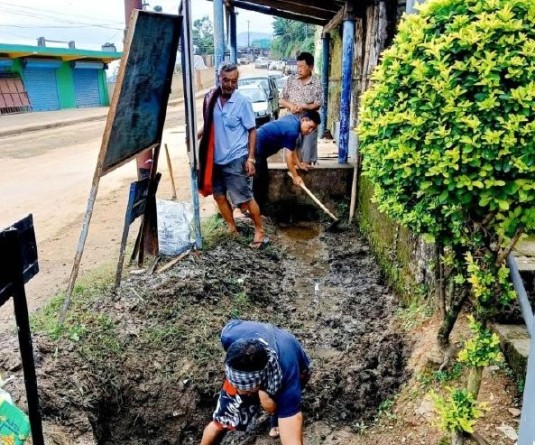
Lemwang Chuhwanglim
Researcher & Activist
Cultural festival is one of the identities of every indigenous community by in large. Similarly, ‘Aoleang’ is the foreparents origin festival of the Konyak tribe among the Nagas, in the Northern part of Nagaland, border to Myanmar.Konyak people celebrate Aoleang in spring season in the first week of April every year.There are numerous written documents about the significance of ‘Aoleang’in detail of each day of the total six days. However, the article examines the current image, knowledge and practice of ‘Aoleang’ in comparison to the former meaning and the existing Konyaks response to ‘Aoleang’.
Oral history of the Konyak elders, in brief, explains that Aoleang signifies thanks giving to living God for the achievement of villagers in sowing seed in the field and seeking blessing for the good harvest of it. Traditionally, the festival encompassesfull of rituals of entertainment, spectacle and remembrance with songs, dances, home visit, sharing food, community gathering, butchering animals, storytelling, drinking rice beer and dressing traditional ornaments/attires with every meaning in them. It fascinatingly indirectly provides space for young men and women to find their admirer, lovers and so on. The decency of social norms and disciplines were the utmost culture in the festival. This helps people in each community to gain harmony, peace and joy during the festival. People in the village share food and drinks together without demarcating the ‘haves’ and ‘haves not’. Equality in humanity was the primary goal that people elicited during the festival. The ethics of Aoleang distinctively indicates the theory of engaging culture, nature, God and human beings. However, the increasing hybridity as fashion (Stockhammer. 2012) that legitimizes the social dynamism has promulgated the shift of the Konyak ‘Aoleang’, to hybrid Aoleangin theories and praxis.
Today, Aoleang is marked by the hybridity of fashion, competition, modernization and new structure (Canclini. 2005); yet, people claim the purity of culture and tradition. It is no more the same Aoleang of the foreparents. It has hybrid to unidentifiable meaning of Aoleang to modification. The first and foremost hybridization of Aoleang in the history of the Konyak occurred in 1997 when the Konyak leaders shifted the first week of the festival to the second week of April in search of salary of Government servants to afford the festive season. However, the introspection of the decision makers that culture is an unprecedented compromised identity which never in the history of foreparents waited for money to celebrate Aoleang, they returned it to the original week. This is not cultural dynamism but manipulating own culture to personal wants.
Adaptation, which in Greek is to fit to, of social dynamism is inevitable (Fister. 2015), however hybridization of culture and its identity to fit in to own situation and demand is killing own history and identity. The predominant younger generation and the middle age Konyak do not know much about the meaning of the beads they use, less knowledge of moves in dance and folklore of Aoleang which repercussions to erroneously utilize. The hybridity has dominated the culture (C.Young. 1995) that many young people utilize improper traditional attires to fit in to their modernized fashion. It is the failure and weakness of the parents and children to demean the original meaning of Aoleang in search of exhibiting the fancy looks of the festival than fitting in to the true meaning and practice of the historic culture. Revitalization (Wallace. 1956) of the former Aoleang is the urgent call for the Konyaks. Despite the mortification of Aoleang culture, the predominant Konyaks may acknowledge and learn from the Upper Konyak who utilizes and presents the originality of Aoleang culture in dressing, dancing and so on, preserving what foreparents have practiced. It is recommendable for the predominant Konyak who hybrid the Aoleang, to relearn and reeducate the common people to preserve, respect and utilize Aoleang in every aspect. Your culture is your identity but hybridization of culture relinquishes the identity and generates confusion within the entire community. Preserve yesterday’s culture today for tomorrow’s generation.




